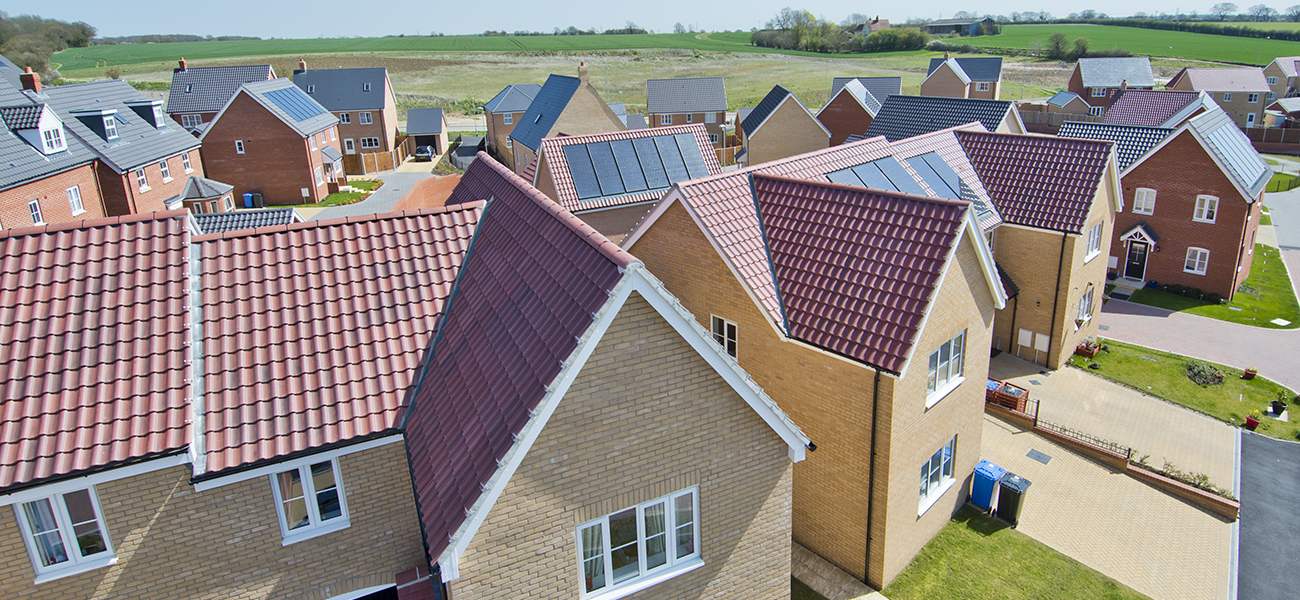What British Standards Apply to Roofing?

Keeping track of British Standards can be difficult. There are, after all, more than 27,000 of them. The good news is that they don’t all relate to roofing, or even the construction industry - so if you’re trying to work out which British Standards apply to roofing, you only need to worry about a fraction of the thousands that are out there.
Here are some of the main British Standards to consider if you’re working on a roofing project:
BS 5534:2014
Slating and tiling for pitched roofs and vertical cladding code of practice (including shingles)
This roofing standard provides recommendations for the design, materials, application, installation, and performance of slates, tiles, shingles and shakes, as well as the associated fittings and accessories used in the construction of pitched roofs.
Rain and wind resistance, along with durability, thermal insulation, the control of condensation, fire resistance, sound, environment, and health and safety issues are also covered. It should be read in conjunction with BS 8000-6 (see below).
BS 5534:2014 has been mandatory since February 2015, and two amendments have been issued since its original publication. The second amendment was published in February 2018 and aims to improve security, durability, and weather-tightness of both new and refurbished pitched roofs. It also refers to a new standard, BS 8612:2018, which will be discussed below.
The recent revisions to the standard reflect changes in the roofing market, especially the increased use of dry-fix roofing systems and aims to set out minimum standards for dry-fix products to improve the quality of pitched roof installation.
BS 8000-6:2013
Workmanship on building sites. Code of practice for slating and tiling of roofs and claddings
This roofing standard covers the laying and fixing of clay tiles, concrete tiles, natural slates and fibre cement slates, as well as their associated fixings and accessories.
It was partially superseded by BS 8000-0:2014, but remains current.
BS 5250:2011+A1:2016
Code of practice for control of condensation in buildings
Condensation can be a big problem in roofs, leading to issues such as damp, structural damage, and even potential health hazards. BS 5250 provides advice for controlling condensation and describes the causes and effects of surface and interstitial condensation in buildings.
Approved Document C refers to BS 5250, stating that a roof will meet the requirements if it's built in accordance with clause 8.4 of the standard, as well as BS EN ISO 13788 (Internal surface temperature to avoid critical surface humidity and interstitial condensation. Calculation methods).
The standard provides detailed guidance on how to control condensation and states that prevention is best achieved through the provision of natural air ventilation.
It also recommends that building designers pay close attention to the sources of moisture (such as water incorporated during construction, precipitation after construction, water vapour arising from occupants and their activities and condensation that occurs due to weather conditions), and emphasises the importance of ceilings that are well sealed and airtight.
BS 8612
Dry-fixed ridge, hip and gable systems for roofs - product specifications
A new standard, BS 8612 was released in February 2018 and sets out minimum performance requirements for dry-fixed roofing systems in regards to fixing, wind load resistance, durability and ventilation according to BS 5250. It applies to both new-build and refurbished roofs.
The new standard was created in response to significant growth in the dry-fix market. Thanks to recent changes in industry standards and guidelines, these systems have become extremely popular. However, this popularity has also led to some inferior products making their way to market and BS 8612 aims to ensure that the products used in a build are suitable.
BS 8612 was announced by the NHBC in the Summer of 2018 and was then included in the update of the NHBC Standards for January 2019. This allowed sufficient time for the industry to transition by January 1st, 2019.
As one of the early pioneers of the dry-fix industry, Marley developed some of the very first high-performance and purpose-made dry-fix roofing systems, and our products already meet the requirements of BS 8612.
Other roofing standards to consider
Of course, the British Standards listed above are not the only ones that relate to roofing. There are many more that will need to be considered, depending on the details of your project - and specific elements of your roof, such as drainage and ancillary components, are covered by their own standards.
Here are just some of the other British Standards that apply to roofing:
- BS EN 494:2012+A1:2015 Fibre-cement profiled sheets and fittings. Product specification and test methods.
- BS EN 506:2008 Roofing products from metal sheet. Specification for self-supporting products of copper or zinc sheet.
- BS EN 508-1:2014 Roofing and cladding products from metal sheet. Specification for self-supporting products of steel, aluminium or stainless steel sheet. Steel.
- BS EN 508-2:2019 Roofing products from metal sheet. Specification for self-supporting products of steel, aluminium or stainless steel sheet. Aluminium.
- BS EN 508-3:2008 Roofing products from metal sheet. Specification for self-supporting products of steel, aluminium or stainless steel sheet. Stainless steel.
- BS EN 1013:2012+A1:2014 Light transmitting single skin profiled plastics sheets for internal and external roofs, walls and ceilings. Requirements and test methods.
- BS 6229:2018 Flat roofs with continuously supported coverings. Code of practice.
- BS 8217:2005 Reinforced bitumen membranes for roofing. Code of practice.
- BS 8219:2001+A1:2013 Installation of sheet roof and wall coverings. Profiled fibre cement. Code of practice.
- BS EN 10169:2010+A1:2012 Continuously organic coated (coil coated) steel flat products. Technical delivery conditions.
With so many different standards that relate to roofing specification and best practice, it can be useful to get expert guidance throughout the planning and building stages of a project. If you’d like to learn more about how the British Standards apply to your roofing project, or if you’d like to discuss your requirements with a member of our technical team, please get in touch.